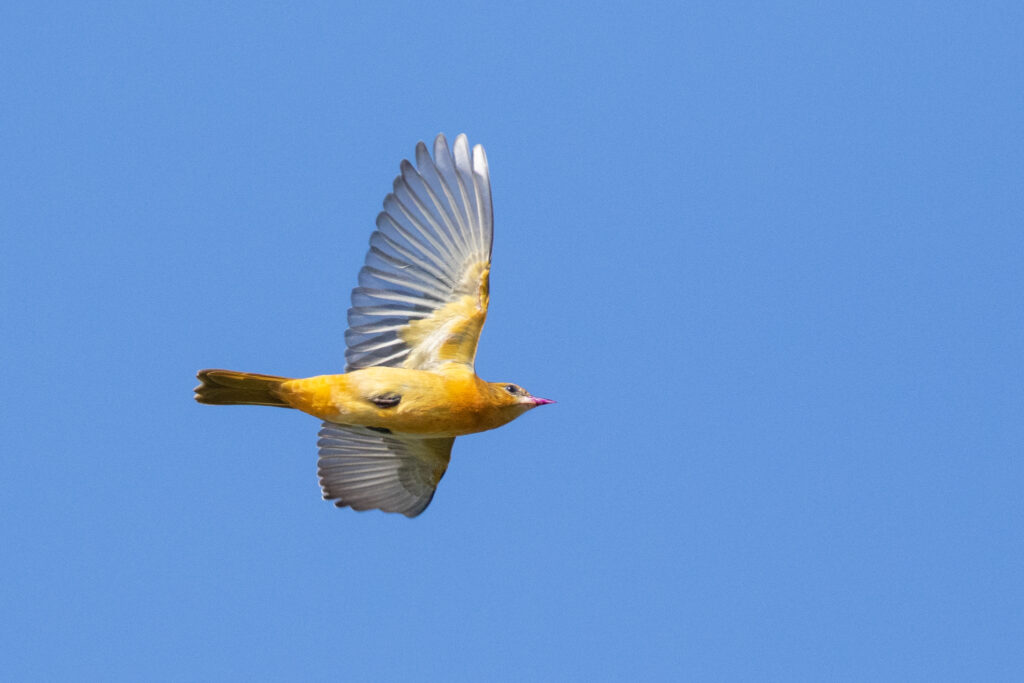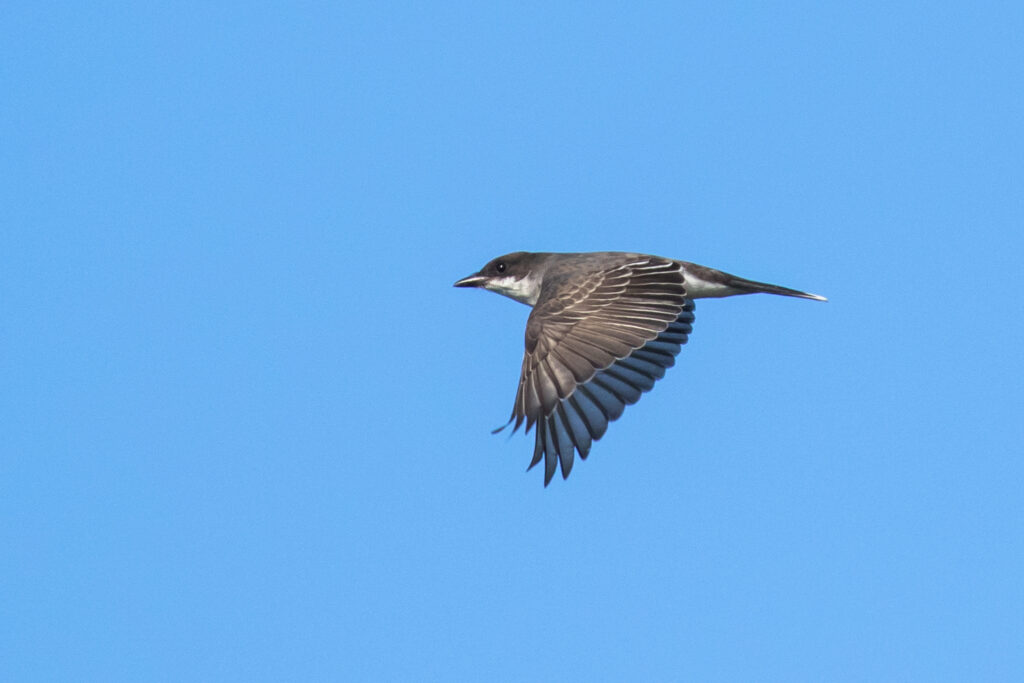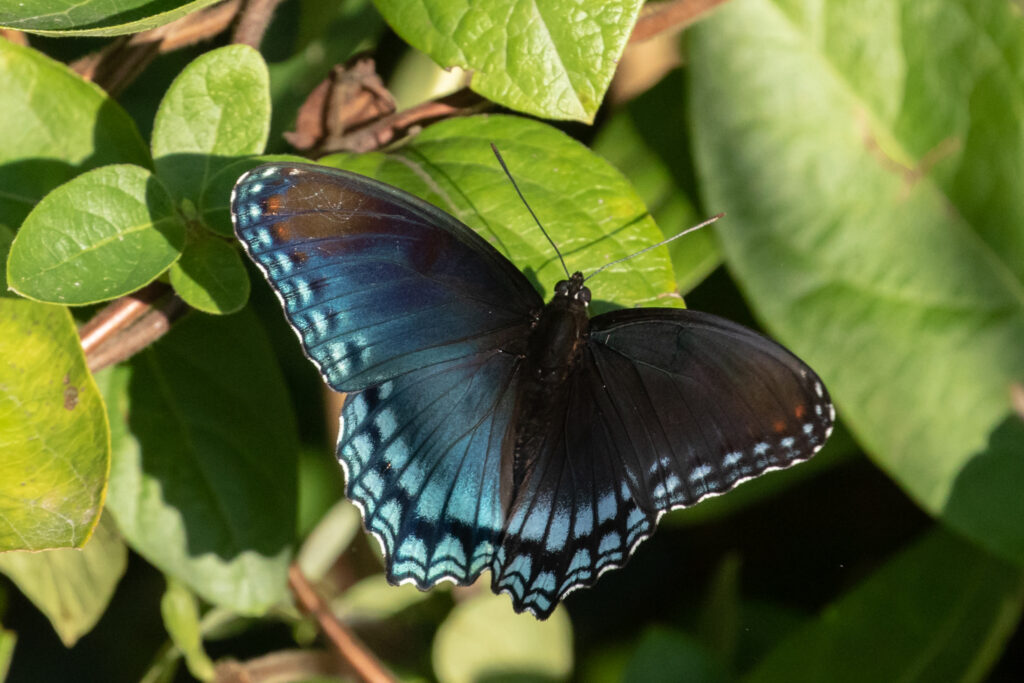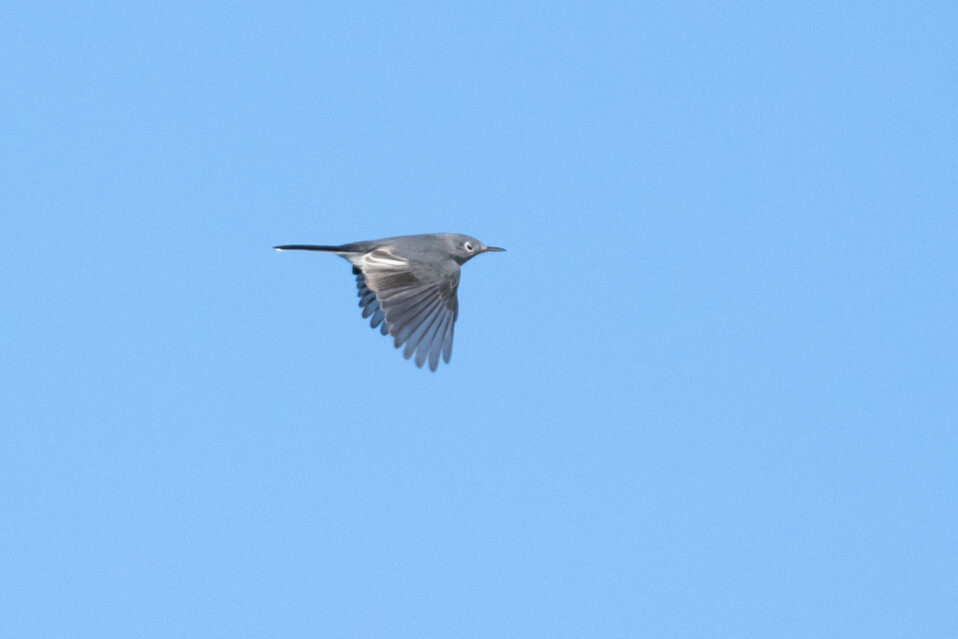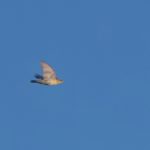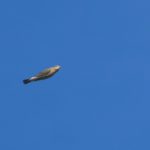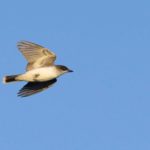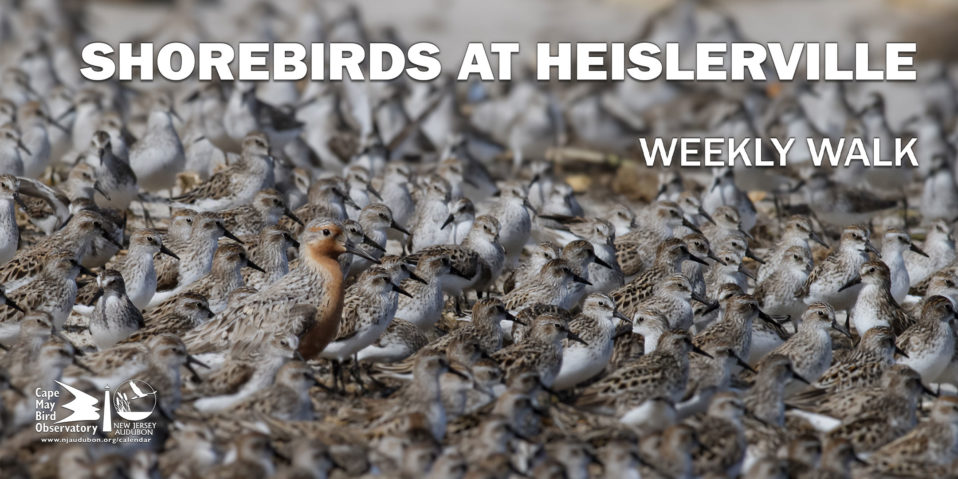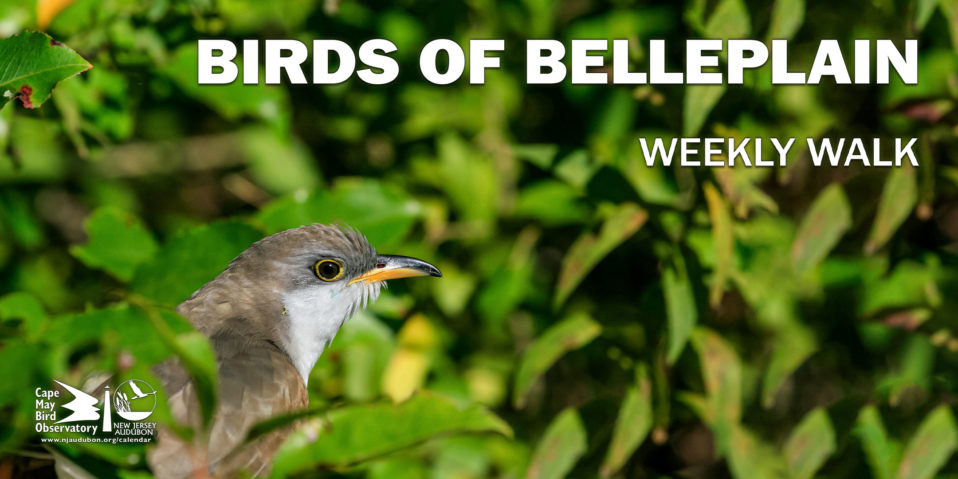[Above: Blue-gray Gnatcatcher engaged in morning flight at Higbee Beach WMA. Photo by Tom Reed.]
We are quickly approaching the end of August, and the count season seems to be flying by already up on the dike at Higbee Beach. August has continued to impress this year, with plenty of busy flights to make up for the inevitable few slow periods. The best day of the season yet rolled around on August 19, when we counted a flight of nearly 4000 birds, including over a thousand American Redstart. Any day with over a thousand of these flashy little warblers is a good one up on the dike, but particularly at such an early date when it’s rare to get such ideal conditions for a big flight. The northwesterly winds continued to produce on the 19th with our first Cerulean Warbler of the year and another Olive-sided Flycatcher, both uncommon fall migrants through Cape May. On the non-passerine side of things, multiple Roseate Terns and a Sandwich Tern were also highlights that day, as well as the first Buff-breasted Sandpiper of the season flying high over the dike later in the morning.
Although our flight on the 19th was the undisputed highlight of the week, there were quite a few other nice days at the count. An American Avocet on August 14 caused a bit of excitement, and a flight of over 800 Bobolinks on August 20 was very enjoyable. It’s been an excellent year already for Olive-sided Flycatcher, with the season total already at four! Blue-gray Gnatcatchers have also been making a strong showing, with our season total rapidly approaching 600 birds counted. Warbler diversity has really opened up as well in the last few days, with species like Blackburnian, Cape May, Chestnut-sided, and Tennessee warblers becoming more regular and numerous amongst many other neotropical migrants. It might still feel like the midst of summer outside, but migration is already going strong and we have counted 19 species of warbler already this season!
Outside of Cape May, the morning flight counts over at the Maryland Biodiversity Project (Turkey Point and Dan’s Rock) have been producing impressive numbers of Cape May Warbler in particular. That species always tends to be more common away from the immediate coast during fall migration but can be much more abundant in some years than others. With the reports from Maryland and a few beginning to roll by at the count already it’s looking like this may be another good year for Cape Mays and hopefully some of the other budworm-dependent warblers like Bay-breasted and Tennessee here in Cape May.
There aren’t many big cold fronts in the forecast for the next week, so we aren’t expecting any mega-flights here anytime soon, but we are far enough along into migration now that there is typically something neat to see on any given day up on the dike, so we are optimistic about finishing out August strong at the count. As always, you can check out our live-streamed totals at https://njaudubon.org/watches/morning-flight/ . Or, better yet, come pay us a visit up on the dike or the interpretive platform at Higbee Beach WMA.
— Gautam Apte, 2023 CMBO Morning Flight counter
